The question of what is a Vulture’s lifespan isn’t entirely straightforward. As an average, Vulture’s can live between 23 and 33 years.
However, that average is from the lifespans of the 22 living species of Vulture. Most Vultures live between 15-25 years old, with some outliers pushing into the 40s and 50s and the Condors maxing out around the 60s and 70s.
The oldest Andean Condor lived in captivity until 79, but wild Andeans usually only reach their early 60s. California Condors seem to meet this same range, with the oldest captive bird surviving into its 70s and wild birds thought to live until this same age.
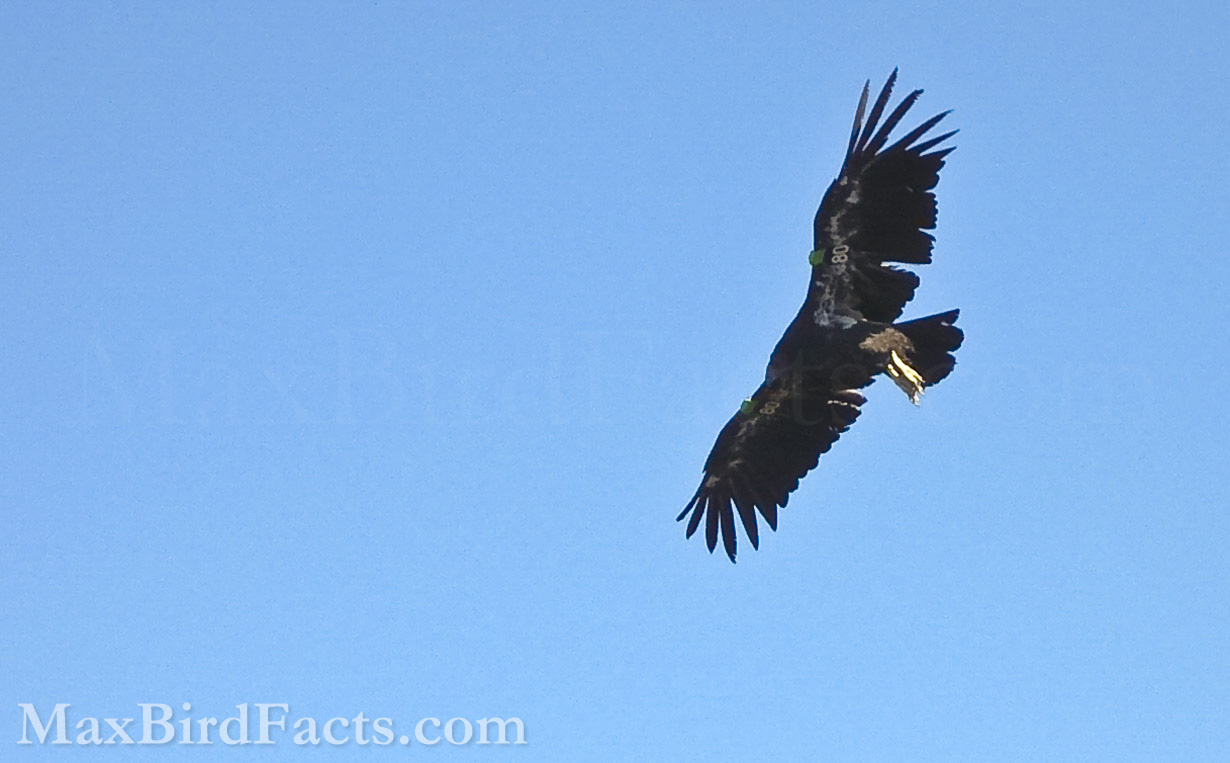
Regardless, of these 22 species, 7 are New World Vultures (Cathartiformes) and 15 are Old World Vultures (Accipitriformes):
- New World Vultures – Cathartiformes
- 15-25 years – Turkey Vulture (Cathartes aura)
- 15-25 years – Lesser Yellow-headed Vulture (Cathartes burrovianus)
- 15-25 years – Greater Yellow-headed Vulture (Cathartes melambrotus)
- 15-25 years – Black Vulture (Coragyps atratus)
- 20-30 years – King Vulture (Sarcoramphus papa)
- 50-60 years – Andean Condor (Vultur gryphus)
- 60-70 years – California Condor (Gymnogyps californianus)
- Old World Vultures – Accipitriformes
- 15-20 years – White-backed Vulture (Gyps africanus)
- 15-20 years – White-rumped Vulture (Gyps bengalensis)
- 15-20 years – Cape Griffon (Gyps coprotheres)
- 15-20 years – Slender-billed Vulture (Gyps tenuirostris)
- 15-25 years – Red-headed Vulture (Sarcogyps calvus)
- 15-25 years – White-headed Vulture (Trigonoceps occipitalis)
- 20-25 years – Hooded Vulture (Necrosyrtes monachus)
- 20-30 – Himalayan Griffon (Gyps himalayensis)
- 20-30 years – Palm-nut Vulture (Gypohierax angolensis)
- 20-30 years – Egyptian Vulture (Neophron percnopterus)
- 20-40 years – Cinereous Vulture (Aegypius monachus)
- 30-40 years – Eurasian Griffon (Gyps fulvus)
- 30-40 years – Indian Vulture (Gyps indicus)
- 30-50 years – Lappet-faced Vulture (Torgos tracheliotos)
- 40-50 years – Rüppell’s Griffon (Gyps rueppelli)
These long lives might initially seem odd, especially when realizing that Vultures primarily eat dead and decaying flesh. However, they have some amazing adaptations and reasons for their longevity.
Still, after reading through that list, you might be thinking, “What makes a Vulture a Vulture, and why does he keep saying ‘New World’ and ‘Old World’ when referring to Vultures?”
So, before we learn why Vultures’ lifespans are so long, let’s discuss what a Vulture is and why there is a distinction between these New World and Old World birds.
What Is A Vulture?
Starting with the definition of “what is a Vulture,” according to Merriam-Webster, a Vulture is “any of various large birds (families Accipitridae and Cathartidae) that are related to the hawks, eagles, and falcons but have weaker claws and the head usually naked and that subsist chiefly or entirely on carrion.”
This definition gives us a few key pieces of information: a Vulture is a large bird with relatively weak grasping power, they usually have bald, featherless heads, and their primary food source is carrion.
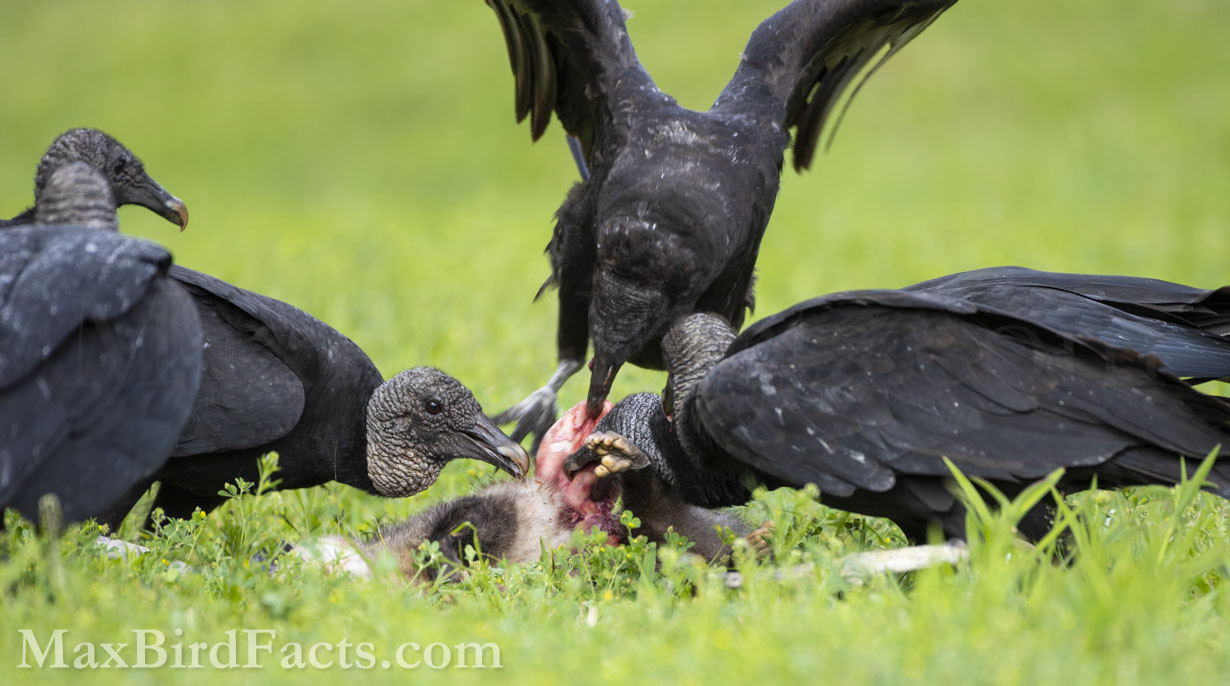
Breaking this down further, we can understand some reasons for this definition. If the Vulture’s prey is primarily already dead, it doesn’t need powerful talons to hold it down while ripping it apart, hence their weaker grasping strength.
The Vulture’s large size is vital to maintain dominance over the carcass they feed upon. If another bird, such as a crow or raven, comes to feed on roadkill a Vulture is feasting on, the Vulture’s size might make the smaller corvid wait until the larger bird has had its fill before hopping in for its turn.
The Vulture’s featherless head has been a point of contention for centuries. Their bald heads were initially thought to stem from their feeding habits, where bits of rotting tissue would become stuck in the head feathers and become infected.
However, this doesn’t seem to make sense when looking at other scavengers in the animal kingdom. Mammals like Coyotes (Canis latrans) will stick their heads and necks deep into a rotting deer carcass and come out gory, yet their heads remain covered in fur.
Other birds, like the Bald Eagle (Haliaeetus leucocephalus), are scavengers with fully feathered heads, despite their names. When the Eagle reaches into a carcass for a hidden morsel, its feathers become bloody, but the bird remains healthy.
Even some species of Vulture, like the Bearded and Cinereous Vultures, have fully or partially feathered heads while still partaking in their scavenger dining habits.
It wasn’t until the late 2000s that researchers started to question this theory of featherless heads for their scavenger lifestyles. Published on March 4th, 2008, the University of Glasgow found that Griffin Vultures (genus Gyps) used their bare head and neck for thermoregulation when changing altitudes.
Their Griffin Vulture soared over 6,500 feet (2,000 meters) in the air, where temperatures average 36°F (2°C), while the air temperature on the African savannah below is over 100°F (38°C).
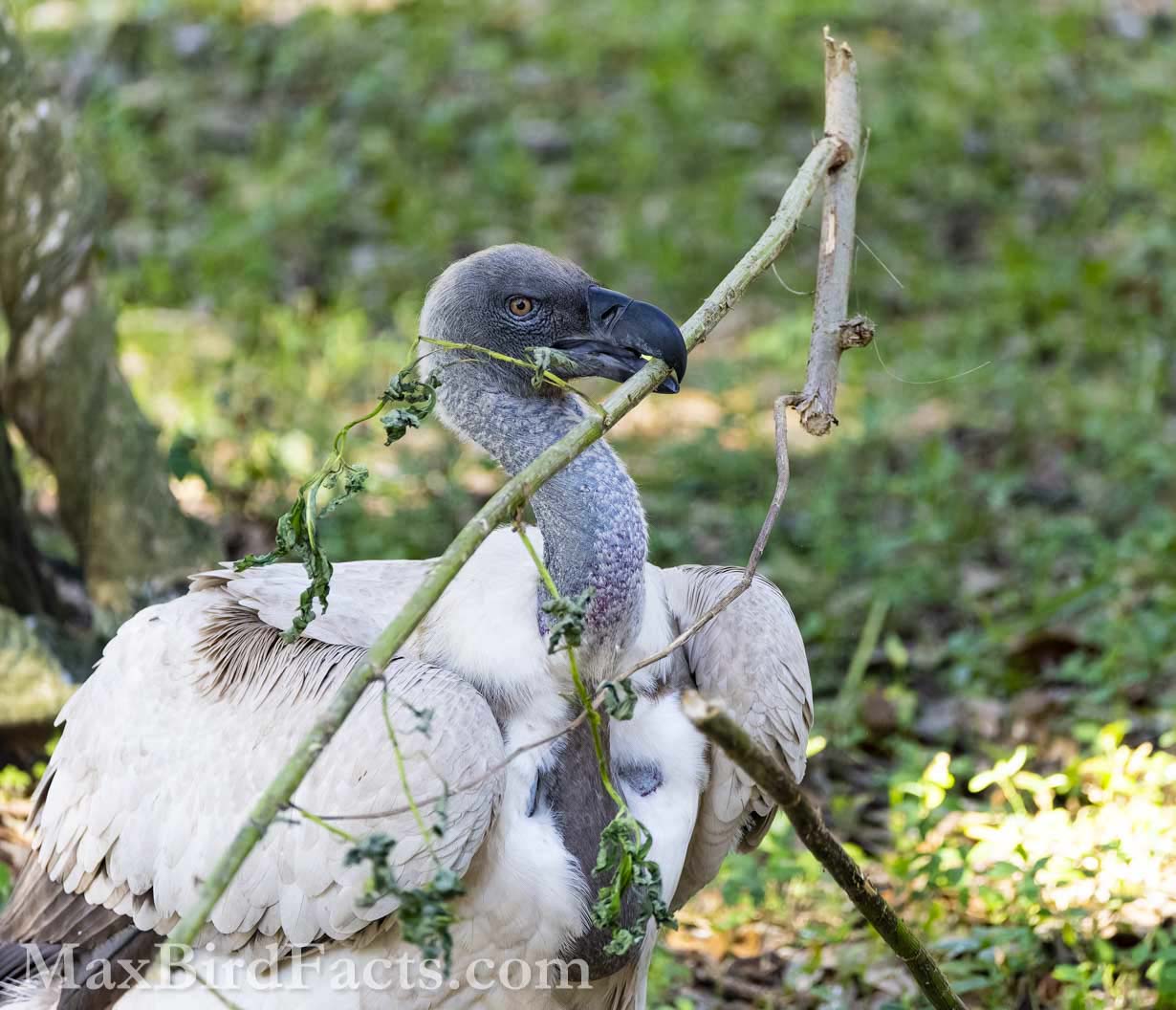
This 64°F (36°C) difference could cause severe issues for the birds when ascending quickly to their cruising altitude. However, simply tucking their neck into their body when flying at these frigid heights stops the Vulture from losing much body heat.
The same is true when the bird is nearer the land; extending its neck out can readily lose heat to the surrounding air, preventing the bird from succumbing to heat exhaustion.
This simple action perfectly represents how birds strive to find the most efficient method to remain successful. The uncomplicated act of exposing or hiding its neck can save a Vulture nearly 50% of its average heat loss to the cold and increases their thermal exchange by 25% in hot climates.
To read more about this, check out my article Why Do Vultures Circle – Thermal Soaring and Opossum Pancakes by clicking or tapping the banner below!
Still, the key to this is the neck’s increased or decreased surface area in the appropriate environment.
Increasing the surface area allows the air to pull heat away from the skin, helping to cool the bird. Reducing the surface area prevents air from reaching the skin as quickly, allowing the Vulture to retain its heat better.
Further, the reason the head and neck are bare rather than another part of the body, say the back, is twofold.
First, the neck is one of the most flexible areas of the body, allowing the bird to manipulate its length and shape to fit the environment, rather than a bald patch on the back that will be difficult to cover when needed.
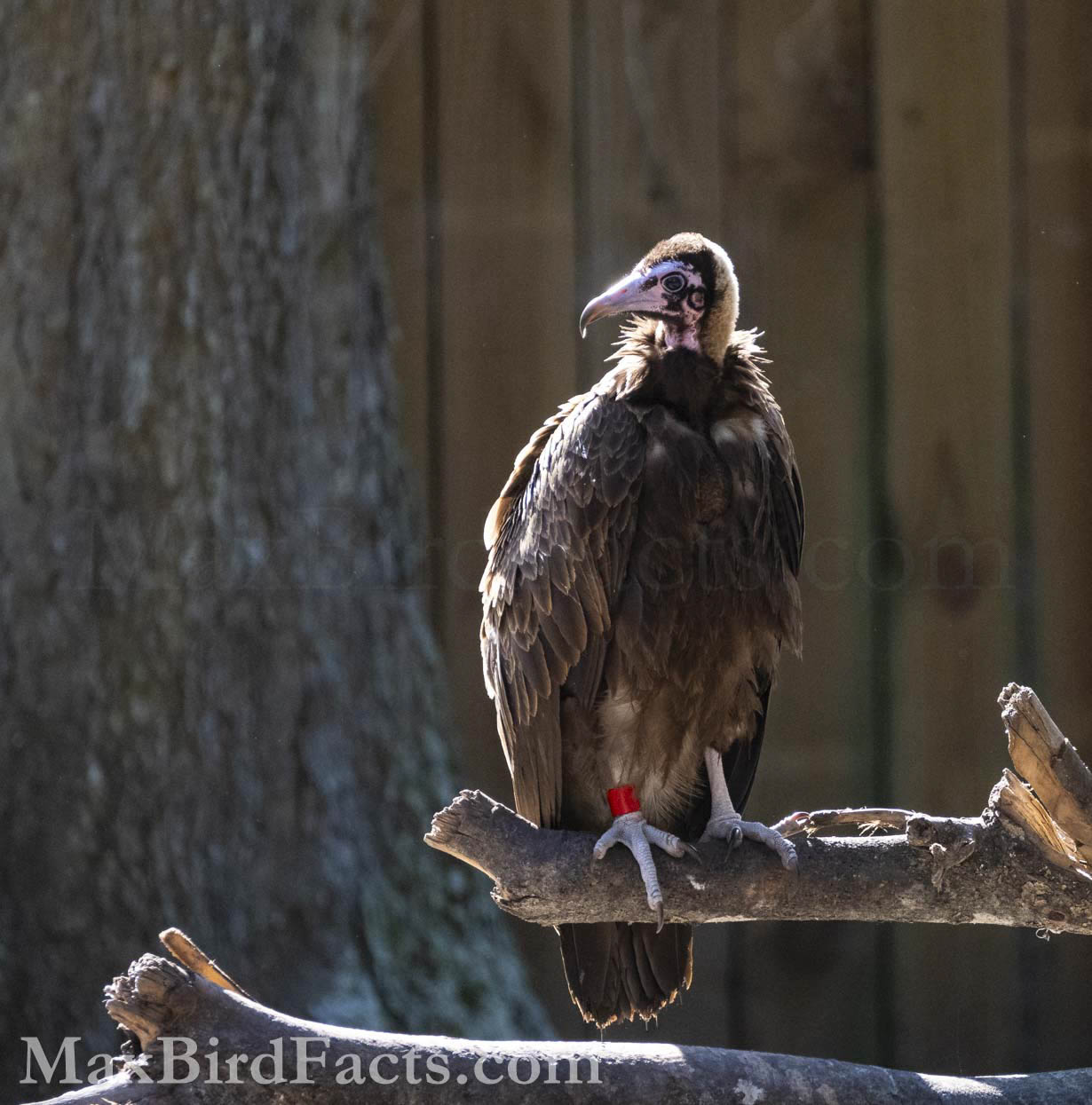
Second, the neck has two of the largest blood vessels closest to the skin: the carotid artery and the jugular vein. Both vessels, the carotid bringing oxygenated blood to the brain and the jugular bringing deoxygenated blood away, allow the Vulture’s hot blood to readily trade heat with the air.
So, now we know what a Vulture is, why are there New World and Old World Vultures?
New World vs. Old World
That Merriam-Webster definition also notes the relationship between the birds belonging to the families Accipitridae and Cathartidae, belonging to the orders Accipitriformes and Cathartiformes, respectively.
Old World Vultures fall under the family Accipitridae, whereas New World Vultures belong to Cathartidae.
There is some argument whether or not the New World Vultures deserve their own order since they are both physically and genetically similar to their Old World cousins. However, there are still apparent differences between these two groups to warrant their separation.
First, convergent evolution explains the similar body shape and lifestyles of these two groups. Convergent evolution, or convergence, is where two groups of animals that aren’t directly related by a common ancestor share physical or morphologic traits.
The classic example of convergence is dolphins and sharks. While they are in two completely separate phylogenetic classes, Mammalia and Chondrichthyes, respectively, both have sleek, torpedo-shaped bodies with rigid dorsal and pectoral fins and typically have counter-shading (darker above and lighter below) colorations.
Convergent evolution typically stems from those two groups requiring solutions to fit a similar niche; in the case of the dolphin and shark, they needed to be agile, quick aquatic predators to chase down fish. The convergence seen among New World and Old World Vultures follows this trend, and the Vulture’s beak is one of the best areas to see this.
In my opinion, beak shape distinguishes two types of Vultures: Rippers and Pickers.
Rippers have deeper, heavily curved beaks designed to perfectly slice into the tough hide of a larger carcass. Ripper Vultures include the California Condor and King Vulture in the New World and the Lappet-faced Vulture and Himalayan Griffon in the Old World.
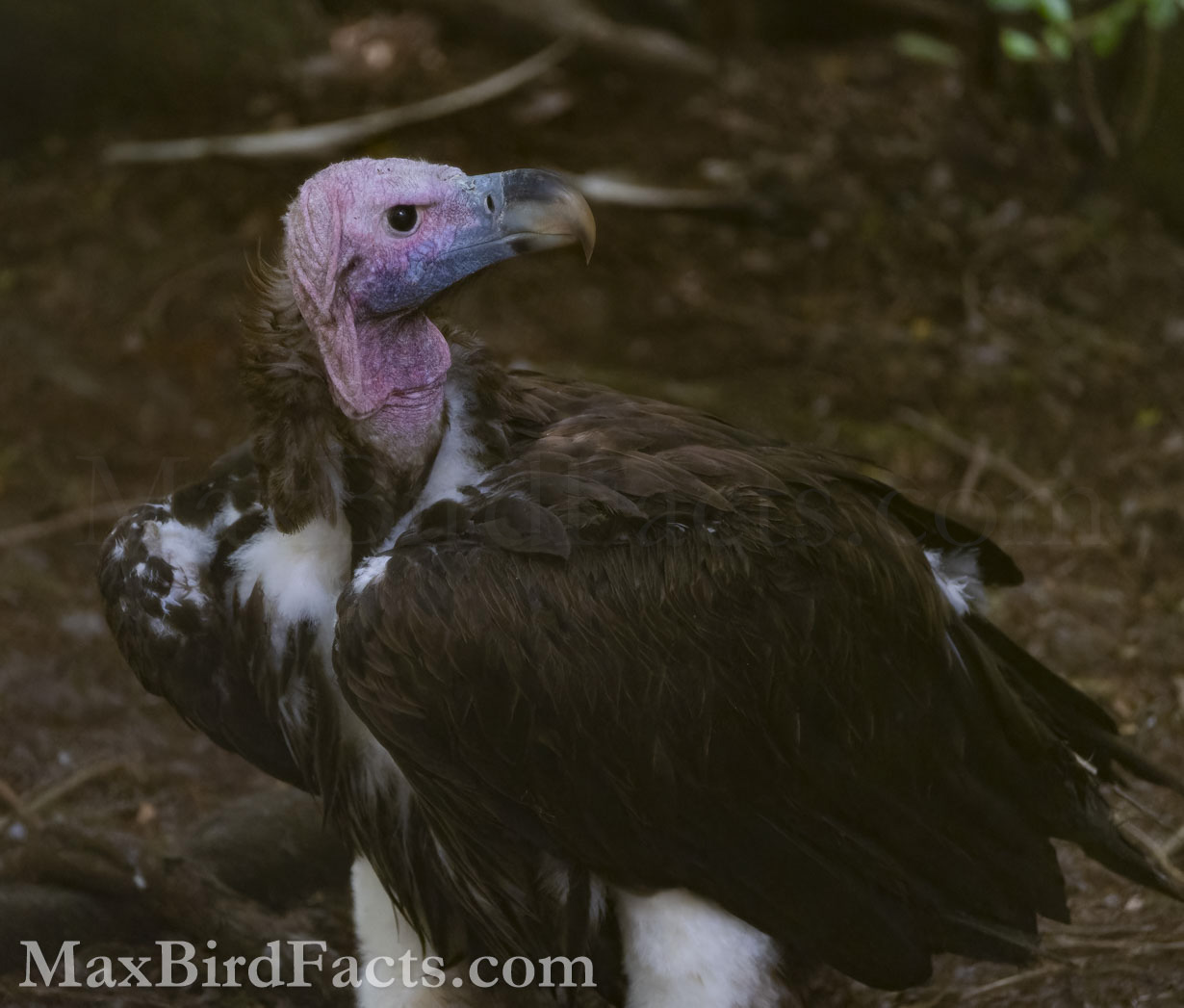
On the other hand, Pickers have much more narrow beaks that can pick into more hard-to-reach areas that other scavengers might have missed. There are far fewer Picker Vultures, with only three of the twenty-two species fitting this bill. Black Vultures in the New World and Egyptian and Hooded Vultures in the Old are the only examples of Pickers.
But what is the importance of these beak shapes? They point to how these birds fill the same niche in their worlds.
Rippers are typically the first Vultures to arrive at an abandoned kill or a diseased animal. These birds tend to have an acute sense of smell, the Turkey Vulture being the prime example of this, with the most sensitive nose in the animal kingdom.
After locating their dinner, the sturdy, sharp beak of the Ripper can tear through the leathery skin of a boar, buffalo, or alligator to access the flesh within. After the Rippers have begun feasting, the Pickers will quickly join.
Picker Vultures tend to have weaker noses but have exceptionally stronger eyesight to see gathering Rippers on a carcass. Once they arrive at the party, Pickers will jostle for a place next to the meal to pluck flesh from between the ribs or other more finicky spaces.
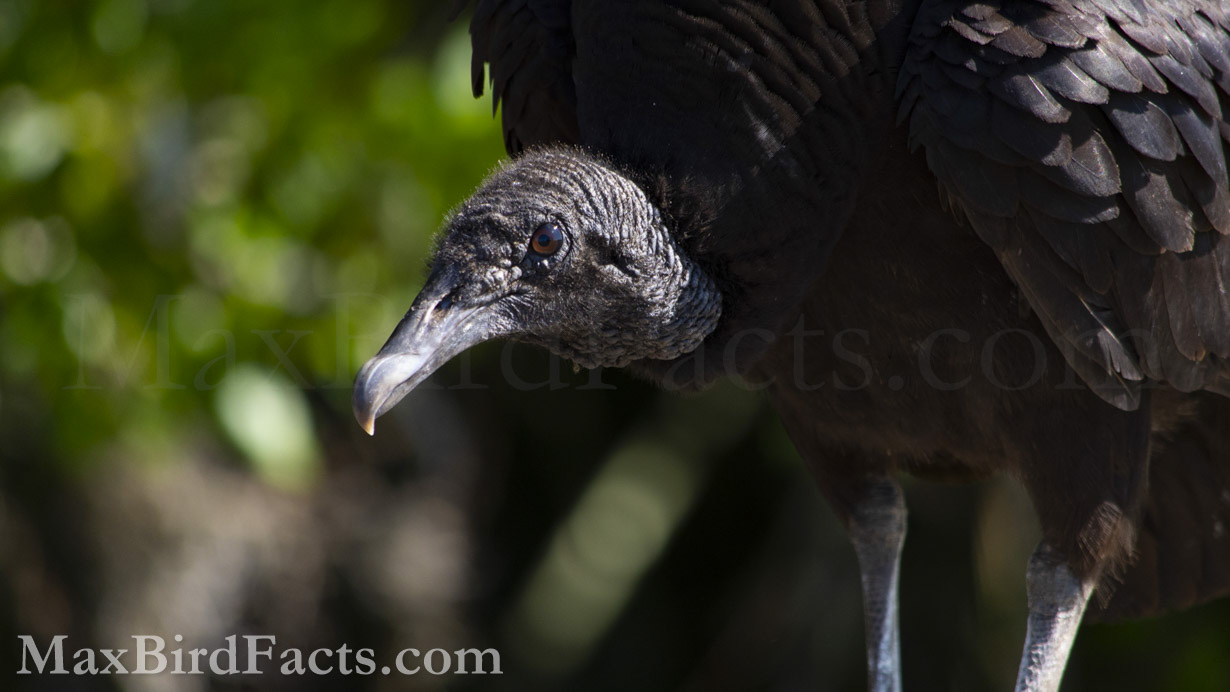
Even in some areas where their prey’s skin is too challenging, like that of a Spectacled Caiman (Caiman crocodilus) on the Amazon River, Black Vultures might have to wait for the arrival of the King Vulture to make the first cut into the reptile’s skin.
Vultures also conduct themselves in a stringent pecking order, where the larger birds have clear dominance and first pick at the meal before the smaller birds.
Again, these two groups have arisen convergently to each other in the New and Old World to fill these niches. And again, just because two species share similar behaviors and physical adaptations doesn’t mean they are directly related.
Second, the bare heads and necks of both New World and Old World Vultures are another clear indication of their convergent evolution, and this is where the argument for the lack of feathers for a scavenger’s lifestyle could seem appropriate.
Just looking at the surface level of these different species, it’s not hard to see where the initial logic for why Vulture’s heads were bald came about. Having a featherless head does make sense at first, but we’ve already debunked this rationale in the previous section.
The real reason both Cathartiformes and Vultures among Accipitriformes have bald heads is for thermoregulation. Like the Griffon Vultures we discussed earlier, the Andean Condor soars at altitudes of 21,000 feet (6,400 meters), where the air temperature can range around 0°F (-18°C), while the ground temperature is 80°F (27°C).
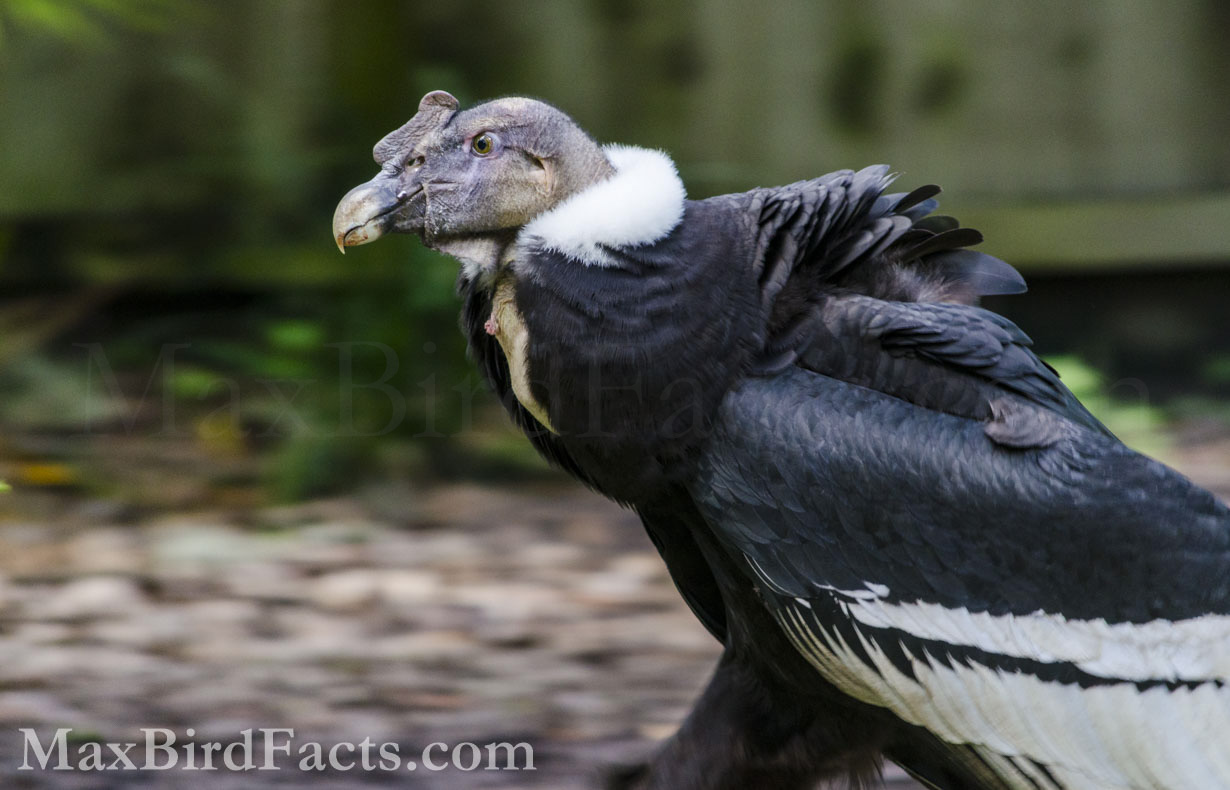
This massive temperature range could cause the Condor to go into shock if it descended too quickly, so the need for quick and efficient temperature regulation through the bare skin on its neck is vital.
While several other species soar near these Vultures, none fly at this altitude for the same reasons as our subjects. Vultures soar at incredible heights to find their prey.
With the keen eyes of their relatives, hawks and eagles, Old World Vultures rely on their eyesight to spot potential prey from a long distance off. This option works excellently when scanning the open African savannah, but it fails once there is more tree canopy to conceal their meal.
Finally, the difference becomes clear when observing how New World Vultures tend to focus more on their sense of smell than sight. The genera Sarcoramphus and Cathartes have some of the best noses in the animal kingdom, as stated earlier for the Turkey Vulture.
King Vultures, the only member of Sarcoramphus, have to sniff out the scent of decaying flesh among the barrage of sensations in the dense jungles of the Amazon Rainforest. The same applies to Turkey Vultures in North American woodlands and their cousins, the Lesser and Greater Yellow-headed Vultures of Central and South America.
Their incredible olfactory ability is due to a unique adaptation: the lack of the nasal septum. With the removal of their nasal septum, these Vultures have pervious nostrils, which allow more airflow to reach their nasal passage and, therefore, more scent molecules to be detected.
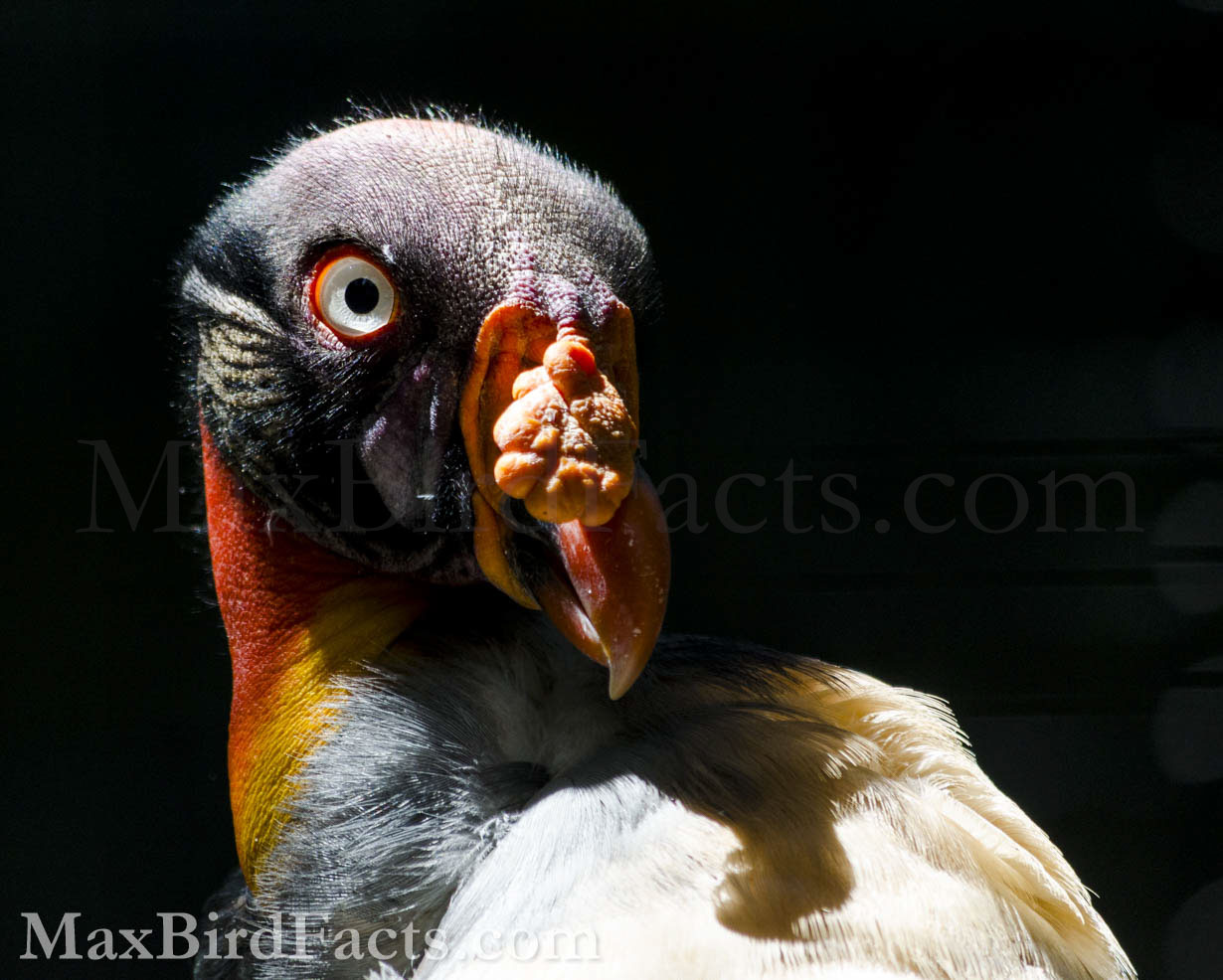
Still, the other three species in Cathartiformes, the Black Vulture and Andean and California Condors, have a more traditional nasal passage and rely on spotting their meal at altitude.
California Condor fossils tell the story of these birds preying on large Pleistocene mammals. This would fit similarly to today’s African Vultures looking for large mammalian carcasses on the savannah today.
More recent fossil records show carbon and nitrogen isotope levels that match predation on marine species, possibly pointing to these birds moving to the coast after the fall of North America’s megafauna. This, again, is seen today with the reintroduction of the California Condor to Big Sur, CA, where they are eating washed-up fish and marine mammals alike.
Still, the similarities between Old World and New World Vultures are very apparent, and it is easy to see why these two groups have a contentious history of lumping and splitting. However, genetic studies concluded that while New World and Old World Vultures are related, they don’t share enough markers to label them under the same order.
Yet, if you search “New World Vulture” in Wikipedia, they still tag this group under Accipitriformes, not Cathartiformes. The ornithological community still classifies New World Vulture as Cathartiformes, but only time will tell if this group becomes lumped back into Accipitriformes.
So, now that we know what a Vulture is and the differences between New World and Old World Vultures, let’s discover why Vulture lifespans are so long.
How Do Vultures Live So Long?
It might surprise you, but the Vulture lifespan of 23-33 years isn’t too unusual for birds their size.
Vultures are large predatory avians, with the Lesser Yellow-headed Vulture being the smallest, with a wingspan of 5.2 feet (1.6 meters) and weighing 2.3 pounds (1.05 kilograms). Even this “small” Vulture is double the average of the avian wingspan, somewhere in the 1.25 feet or 0.38 meters range.
The largest Vulture is the Andean Condor, with a wingspan of 9.5 feet (2.9 meters) and averaging 24.8 pounds (11.25 kilograms). This massive bird boasts the longest wings among birds of prey, but its span is only rivaled by the Albatross.
These measurements push Vultures into a category where their life expectancy should reflect the average we discussed earlier. For example, other similarly sized raptors, such as the Bald Eagle, fit the same 20-30-year range of the Vulture.
Even for the massive Condor, its lifespan matches the birds it measures up to. Recently, the Laysan Albatross (Phoebastria immutabilis), Wisdom, is expected to be 71 years old as of December 2022. This makes Wisdom the oldest wild bird to have been accurately recorded.
Still, the thought of consuming rotten, decomposing flesh as their primary food source would seem like a death sentence. Yet, this is where the Vulture’s adaptations shine.
The Turkey Vulture’s stomach acid is one of the most corrosive substances in the animal kingdom, at a pH of nearly zero or equivalent to high concentration hydrochloric acid.
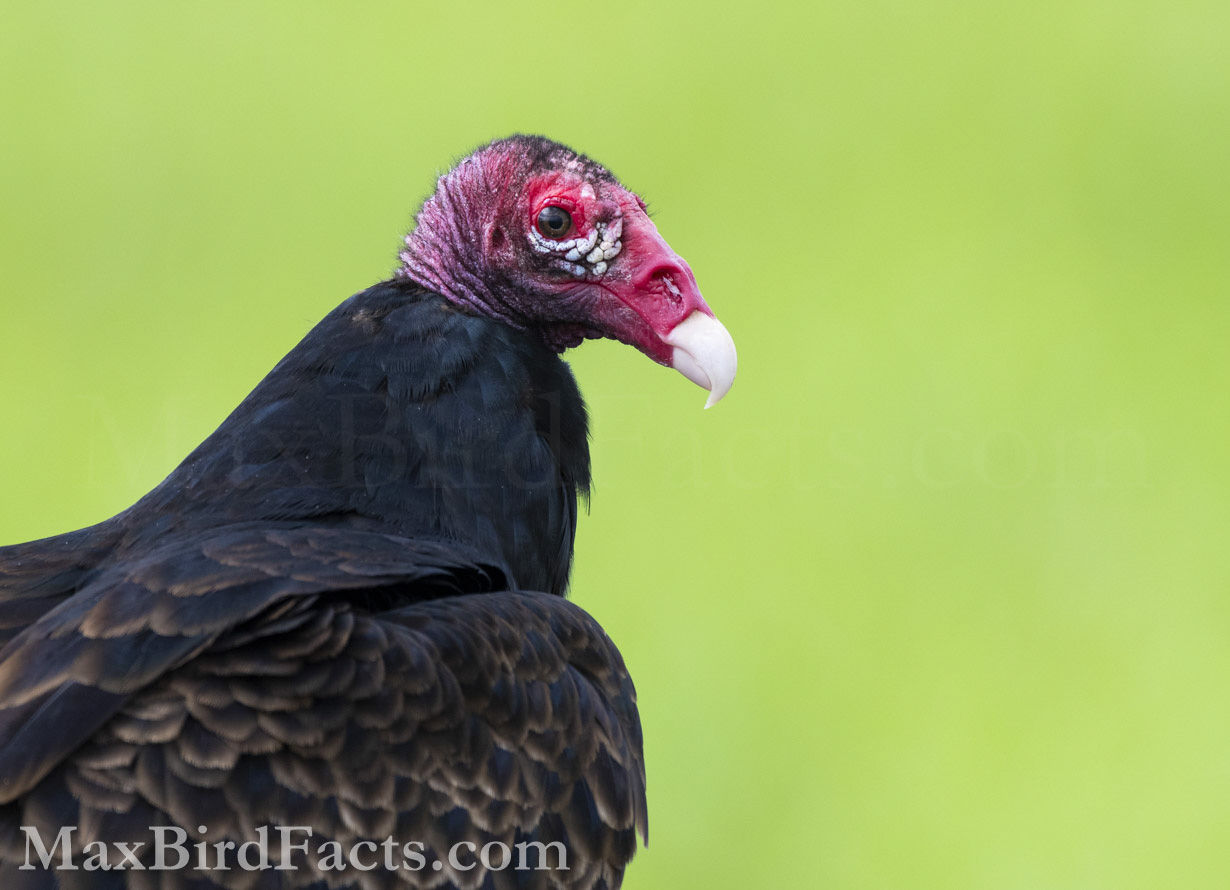
To put this into perspective, the average human stomach acid ranges between 1.5 and 2.0 pH, while orange juice has a pH of 3 and pure water is 7. The pH scale is logarithmic, meaning as the value deviates from one stop to the next, say pH 2 to 1, that substance becomes ten times more acidic.
So, if the Turkey Vulture’s stomach acid is at a pH of near 0 and ours is at 2, that means their stomach acid is 100 times more potent than ours.
This incredible acidity is necessary because of the food Vultures prey upon. If the Vulture’s gastric acid isn’t as strong as it is, the bacteria and parasites growing on the decaying animal would surely make them ill and likely kill the bird.
However, this astonishing concentration means their stomach solution may have gone overboard in its evolutionary arms race. Substances hovering around the 0 pH level are incredibly corrosive, even able to dissolve metals completely.
This high corrosivity is vital to the Bearded Vulture’s success since they are one of the few birds with a diet of 70-90% bone. Without their powerful stomach acid, it would be impossible for these vultures to digest this strange dietary choice.
The highly acidic stomach acid helps Vultures kill pathogens such as anthrax, cholera, botulism, and polio that naturally grow on their meals.
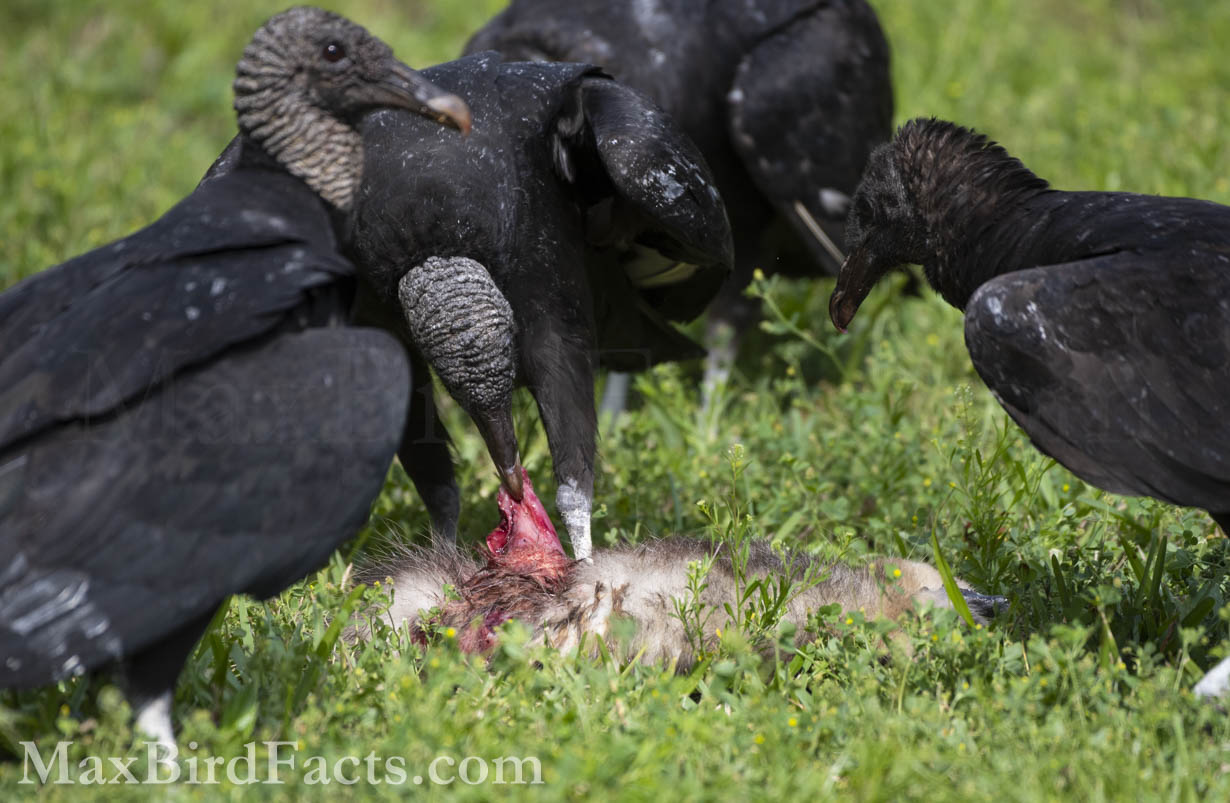
This excessive nature isn’t an unheard-of phenomenon; one of the best examples is the ridiculously deadly poison found in South American Poison Dart Frogs (family Dendrobatidae). The astonishing potency of the frog’s poison, or the Vulture’s stomach acid, ensures that no matter what the threat is, that animal can surely handle it, whether that’s a hungry Jaguar for the frog or a mysterious rotting hunk of meat for the Vulture.
The Vulture’s feathers also aid in its ability to fight these ailments. The overall dark aspect of the Vulture’s plumage allows them to raise the air temperature around their feathers to bacterial-killing levels.
When a Vulture spreads its wings to soak up the sun after a big meal, it can raise the temperature of their feathers to 160°F (71°C). This heat is sufficient to kill a whole host of pathogens that could be lingering on the flecks of gore on the Vulture’s feathers.
Vultures also use this increased heat to deter endoparasites, such as mites, ticks, and lice. The 160-degree calefaction might not kill these freeloaders, but they could become uncomfortable enough to leave and seek an easier host.
Simply think of how uncomfortable it is to sit in a dark-colored car on a sunny summer day. Even with the windows cracked, the air temperature in that car quickly becomes unbearable and stifling.
To learn other reasons vultures sun, check out my article Why Do Vultures Spread Their Wings – Feathered Solar Panels by clicking or tapping the banner below!
So, with their stomachs filled with the most corrosive solution in the animal kingdom and feathers designed to become ovens, it’s clear to see how Vultures survive on their feasts of rotten flesh.
Without these adaptations, these large birds of prey would surely succumb to the myriad of diseases that fester on their food. Thankfully, Vultures do the job that is only too necessary in nature: cleaning up the diseased.
Without Vultures picking at the remains of road kill or otherwise departed creatures, there would be a noticeable increase in disease. The initial work these birds do by opening up the carcass allows other detritivores (animals that feed on decomposing animal or plant parts) to more readily begin their work.
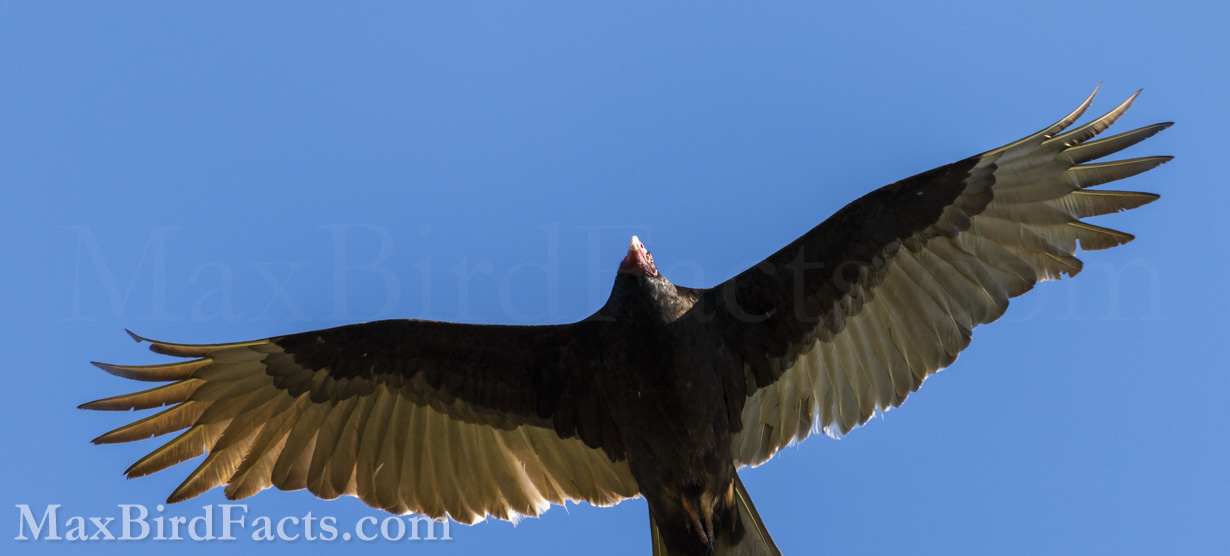
Like how the Black Vultures wait for their King to arrive and make the initial incision through the caiman’s hide, hundreds if not thousands of species rely on Vultures to get the ball rolling in recycling that animal back into the ecosystem.
Similar to garbagemen picking up your trash each week, Vultures fill a very similar niche in their world. Without them, we would be drowning in the stench of rotten flesh and seeing death at nearly every turn.
Let alone the diseases that would become rampant without the help from these birds. As mentioned before, these decaying animals can harbor anthrax, cholera, botulism, and polio, and these deadly diseases would reach pandemic levels if Vultures weren’t around to clean up.
Thankfully, these magnificent birds have found a niche and are masters of it because of their incredible adaptations.
Now We Know Vulture Lifespans!
Now we know why Vultures live for 23-33 years and why that shouldn’t be a shock. For their size, these birds live within the average lifespans of other avian species.
Even the remarkably long-lived Condors at 60-70 years match the ages of the only other species that rival them in size: the Albatross. The more average-sized Vultures, still large birds, also compare the age range of their peers: Bald Eagles being 20-30.
Their stomach acid can dissolve even the deadliest diseases, and their dark feathers ward off parasites that cover their meals. The astonishingly corrosive nature of the Vulture’s gastric acid even allows some species to specialize in consuming bone as their primary food source.
Vultures get a bad rap for being dirty, disease-riddled creatures that bring death wherever they go. However, this negative perception of the Vulture is blatantly incorrect and doesn’t need to remain.
Vultures have taken on a symbol of reverence in many cultures worldwide. The Cherokee call Turkey Vultures “Peace Eagles” since they survive without killing other animals; the Egyptians see Vultures as the symbol of the goddess Isis, representing motherhood, purity, and eternal life.
We should look back to these cultures to readjust our own perceptions of these animals. Without Vultures, we would be in a world bulging with death and disease. But thankfully, we have these fantastic birds flying our skies and fulfilling their part of their ecosystems.
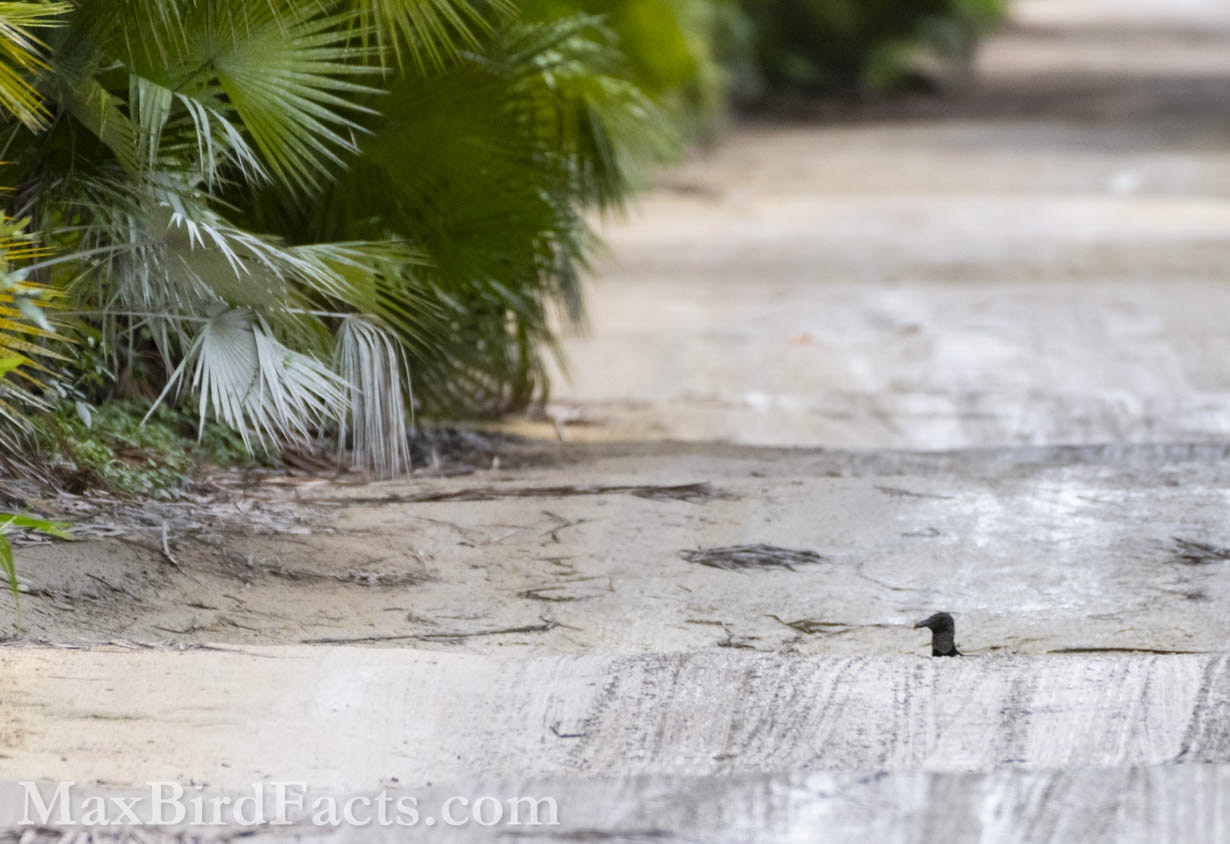
I really hope you enjoyed learning more about Vulture Lifespan, and hopefully, you learned something new from this article.
If you have ideas or suggestions for topics you would like me to write about in the future, feel free to leave a comment below or shoot me an email!
If you enjoyed this article, please subscribe to my email list to be the first to know when I post new articles!
Get Outside & Happy Birding
Max
